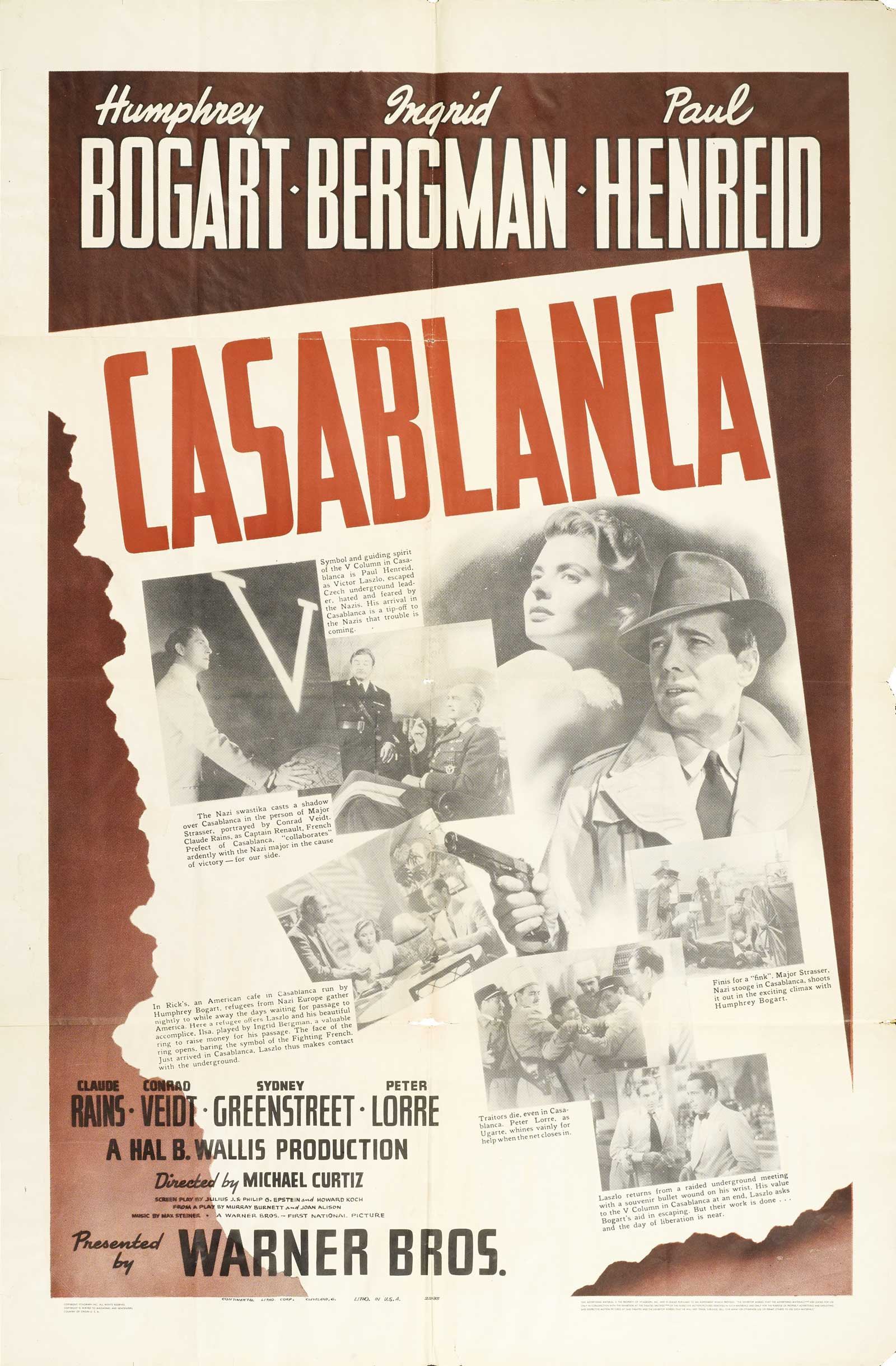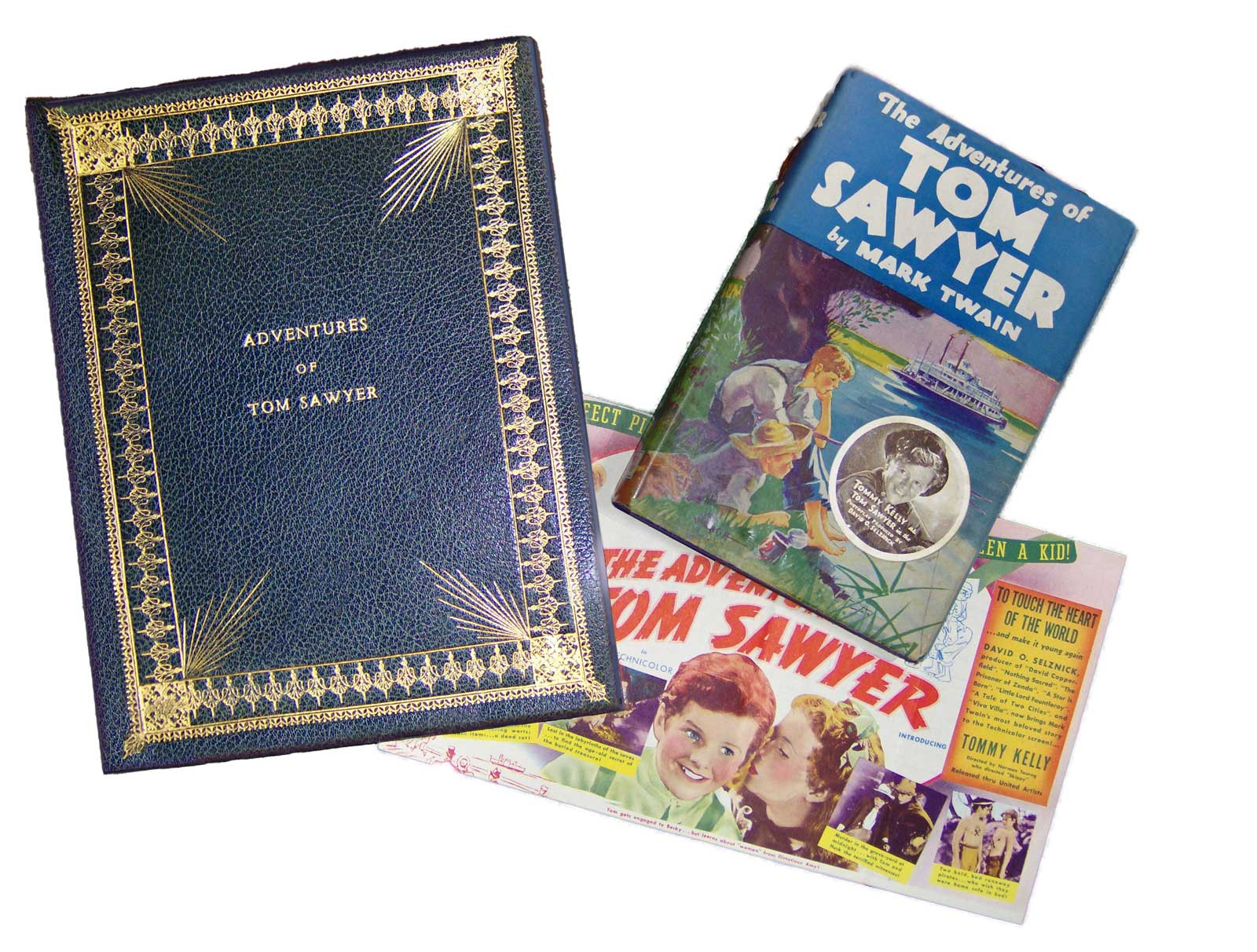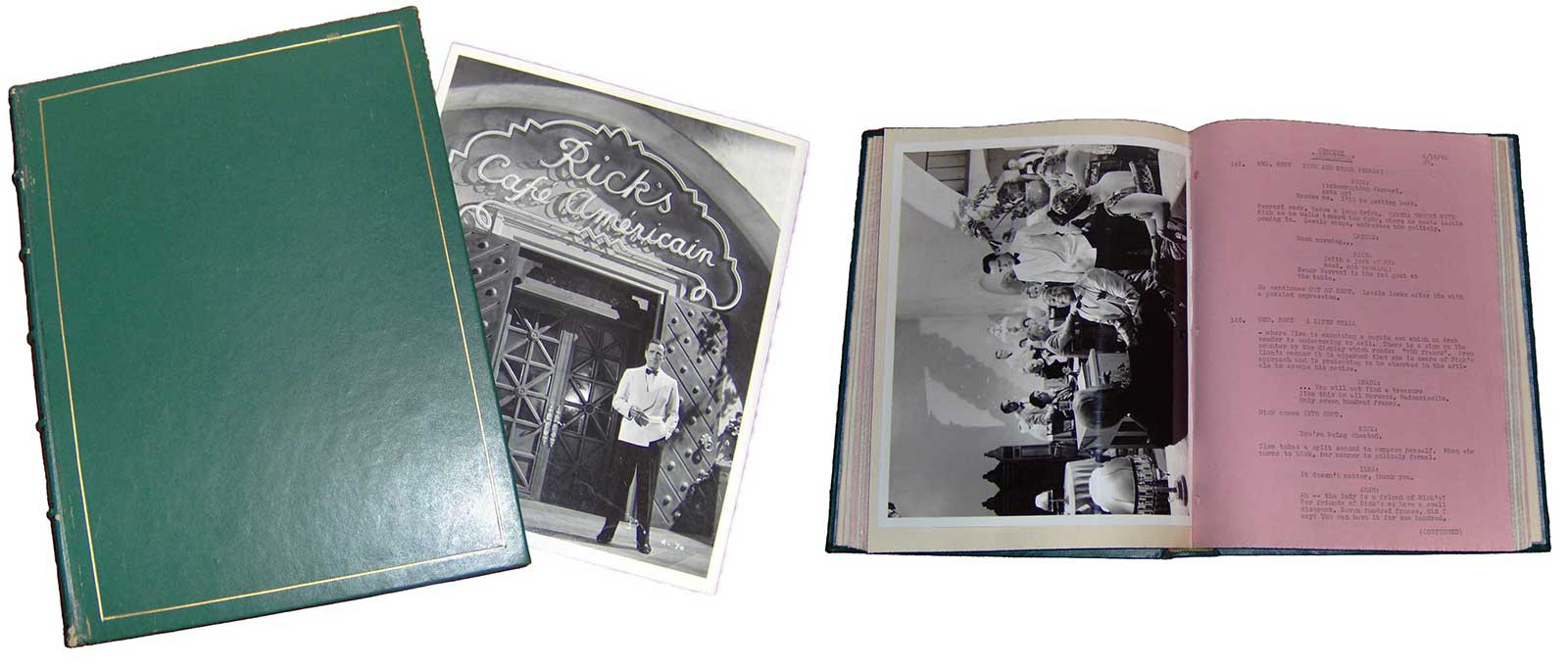Scripts from the silver screen are highly collectible, particularly when you’re dealing with classic films like Gone With the Wind, Casablanca, and Citizen Kane
When one thinks of Hollywood, the phrase “the written word” doesn’t always immediately leap to mind. Of course, it could refer to a classic novel from which has sprung a celluloid representation but unfortunately, for the most part, the audience seldom thinks of the film’s writer as it watches a movie unfold. Allow me to restate what I consider the operative word in the preceding sentence: unfortunately. For many in the theater aren’t thinking about those who might have struggled, sweated, sometimes panicked, sometimes bayed at the moon, and perhaps even slowly crawled over a frightening writer’s block to finish and polish a screenplay. Apart from adapted source material, the screenplay is obviously where it all begins. Perhaps you’ve heard the Hollywood maxim, “If it ain’t on the page, it ain’t on the stage.” If you’ll forgive the grammar, the message is loud and clear.
But happily, on many occasions, reviews, publicity, awards, and even producers, directors, and actors will pay tribute to the person who sat in front of a keypad (or lest we forget times gone by, a typewriter) churning out a celebrated script. Where would Casablanca have ended up without that Academy Award–winning screenplay? Or the Oscar-winning scripts for such memorable films as Citizen Kane, Gone With the Wind (GWTW), On The Waterfront, To Kill A Mockingbird, and so many other classic examples of the writer’s craft. Even superb scripts that don’t win ‘Best Screenplay’ can be celebrated with a nomination or when a film wins ‘Best Picture.’
It is, therefore, nice to see collectors celebrating the Hollywood writer. For the purposes of this article, I have chosen to limit my discussion to an earlier Hollywood and some iconic screenplays. I didn’t want you thinking
I was ignoring more recent works such as the exceptional Chinatown, The Godfather, Annie Hall, The Shawshank Redemption, Schindler’s List, and others on the Writers Guild list of 101 Best Screenplays
But returning to the topic of iconic Hollywood films, for some collectors there are one-of-a-kind gems that appear on the market every so often—those scripts that were nicely bound by their owners for their personal libraries, scripts belonging to persons directly associated with the film in question, scripts containing vintage stills bound in, and working scripts or finished “as shot” scripts. While many over the years had their scripts specially bound, not everyone in Hollywood followed this trend, and thus the special place these scripts hold in this collecting universe.
Studio moguls Jack Warner and David O. Selznick are good examples of those that had impressive libraries of nicely bound scripts from each of their films. Producer Mark Hellinger had his scripts beautifully bound, as did directors Norman Taurog and Mitchell Leisen, and writer Nunnally Johnson. Actors Clark Gable, Alexis Smith, and Jack Lemmon had their scripts nicely bound, but did Bogart? We know Gable had a beautifully bound copy of GWTW given to him by Selznick, but did Bogie have a bound copy of Casablanca?
Dr. Catherine Williamson, director of fine books and manuscripts at Bonhams in Los Angeles, has seen a number of nicely bound scripts. “As we handle many celebrity and Hollywood estates, I am always excited to see a row of bound scripts in the library, because I know they will generate a lot of attention at auction.” Joe Maddalena, president of the California-based Profiles in History, concurred, “We’re always interested when we find a vintage bound script from a classic film. They definitely add a premium dimension to script collecting.”
In the world of bound scripts, there is a celebrated Hollywood character who raised the sought-after item to unexpected heights. Legendary producer David O. Selznick was as famous as the motion pictures he brought to the screen. What is not readily known is that he was a generous gift giver, and he specifically enjoyed having scripts from his films nicely bound and personalized so that he could give them to people who worked on those productions. These became treasured items in Hollywood not only as mementos of the films but also as impressive and thoughtful gifts. And being also a writer, at the beginning of each script, Selznick would pen the perfect, pithy, and timely inscription to the recipient. To my knowledge he was the only producer to do this on a consistent basis and in turn elevated the practice to an art form. Over seventy years later these “presentation” scripts are highly desirable Hollywood collectibles.
That would then bring the conversation around to the ultimate group of bound Selznick “presentation” scripts: the scripts for GWTW. Adjusted for inflation, the Selznick International film is the highest grossing domestic box office champion of all time ($1.6 billion), and the bound scripts generate excitement each time one appears on the market. They were given not only as mementos of the production but also as Christmas gifts as the film premiered in December of 1939. The ones that have surfaced over the years reveal that bound copies were given to some cast members, the writer, certain members of the production crew, certain MGM employees (MGM distributed the film), as well as investors and board members of Selznick International Pictures. The finished, “as shot” scripts were bound in two styles, one in maroon leather and cloth, and a deluxe version in full leather. Both styles, with 256 pages, feature the recipient’s name and the film’s title accomplished in gilt on the front cover with the gilt title also on the spine. Bound into each script were six to eight production stills. (Selznick’s personal copy seems to be the exception with nine stills.)
Of the twenty-six GWTW presentation scripts presently known by this writer, some are in prominent archives, but many are in private collections. Of course, the ultimate pairing would be Selznick’s and author Margaret Mitchell’s full leatherbound copies. Selznick’s script is in the Hargrett Rare Books and Manuscripts Library at the University of Georgia while Mitchell’s resides in the permanent Mitchell Collection of the Atlanta/Fulton Public Library. Mysteriously, there is no Selznick inscription in Mitchell’s script and no stills bound in. (Selznick, however, also gave her a similarly bound album of stills from the film.)
Another important GWTW script is that of Selznick’s brother, Myron. One of the preeminent Hollywood agents at the time, Myron Selznick was an early investor in Selznick International, and it was he who brought Vivien Leigh to the studio. David inscribed his brother’s script as follows, “For Myron, who found the Scarlett, and heckled the producer. I hope he’s satisfied. David, Xmas, 1939.” The script is in the permanent collection of the Beinecke Rare Book and Manuscript Library at Yale University.
In 1996, Clark Gable’s GWTW presentation script sold at auction (reportedly to Steven Spielberg) in Los Angeles for $244,500. The full leatherbound script included the eight vintage stills and the perfect Selznick inscription, which read, “For Clark, who made the dream of fifty million Americans (who couldn’t be—and weren’t—wrong!), and one producer come true! With gratitude for a superb performance and a happy association. David, Xmas, 1939.” A year later, Olivia de Havilland’s deluxe script came to auction, also in Los Angeles, and sold for $40,250. But whereas all four “star” scripts have surfaced (Leslie Howard’s script is in this writer’s collection), Vivien Leigh’s copy presented a fascinating whodunit. Quite surprisingly it failed to sell at auction in 2006, with one probable chief reason being that the all-important Selznick inscription page had been excised. We may never know why, but it is a most unfortunate situation that one of the four “star” scripts is so seriously incomplete.
But as we’re focusing on Hollywood’s “written word,” what about GWTW’s Academy Award and Pulitzer Prize–winning writer Sydney Howard? He never lived to see the completed film. In August of 1939 he was killed in a tractor accident on his farm. Two Howard presentation scripts do indeed exist (a leather and cloth and a full leather) with no definitive answer as to why—they are, of course, sans inscription, and the thought is that a letter likely accompanied a script when sent to Howard’s widow. Profiles In History sold Howard’s deluxe version in 2012 for just under $25,000. In 2013, Profiles also sold a final shooting script of GWTW presented by Selznick to assistant director Eric Stacey for $84,000.
Photos Credit: Sonny King.
MGM über-executive Irving Thalberg and his wife, MGM superstar Norma Shearer, were the first investors in Selznick’s company, and Shearer was originally offered the role of Scarlett but bowed out. In 2012, a dealer offered Shearer’s full-leather presentation script with six vintage stills bound in for $35,000. The Selznick inscription reads, “For Norma, the ever appreciative. With gratitude for her never failing encouragement, and with affection, David. Xmas, 1939.”
And with the passage of time, interesting questions associated with these “presentation” scripts have arisen, primarily dealing with where certain scripts could be. Important scripts that research shows were on Selznick’s gift list are out there somewhere, unrecorded. Selznick’s father-in-law, MGM boss Louis B. Mayer, certainly received one, but so far it is nowhere in sight. Director Victor Fleming’s script seems to have gone astray (though his GWTW Oscar statuette sold for $244,500 in 1994). And Selznick International’s chief investor, John Hay Whitney, was a recipient, and yet a search of the Whitney archives has revealed no clues to its whereabouts.
As collectors, we can only wait patiently for these and the bound beauties for other classic films to make their entrance. While collecting and preserving Hollywood scripts is certainly an eminent and rewarding endeavor, the vintage, one-of-a-kind bound screenplays from classic motion pictures are the enticing desserts that come along every so often to add to the pleasure.





















